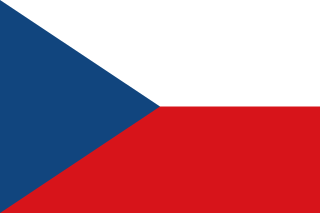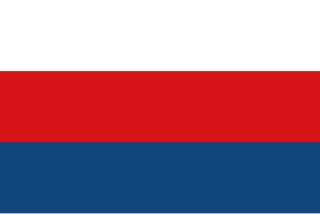 W
WThe German occupation of Czechoslovakia (1938–1945) began with the German annexation of the Sudetenland in 1938, continued with the March 1939 invasion of the Czech lands and creation of the Protectorate of Bohemia and Moravia, and by the end of 1944 extended to all parts of the former Czechoslovakia.
 W
WOn 27 May 1942, Reinhard Heydrich – the commander of the Reich Security Main Office (RSHA), acting governor of the Protectorate of Bohemia and Moravia, and a principal architect of the Holocaust – was attacked and wounded in an assassination attempt in Prague by Czechoslovak resistance operatives Jozef Gabčík and Jan Kubiš. He died of the injuries sustained on 4 June 1942. Heydrich was one of the most powerful men in Nazi Germany and an important figure in the rise of Adolf Hitler.
 W
WThe Decrees of the President of the Republic and the Constitutional Decrees of the President of the Republic, commonly known as the Beneš decrees, were a series of laws drafted by the Czechoslovak government-in-exile in the absence of the Czechoslovak parliament during the German occupation of Czechoslovakia in World War II. They were issued by President Edvard Beneš from 21 July 1940 to 27 October 1945 and retroactively ratified by the Interim National Assembly of Czechoslovakia on 6 March 1946.
 W
WThe Brno death march began late on the night of 30 May 1945 when the ethnic German minority in Brno was expelled to nearby Austria following the capture of the city by the Allies during World War II. Only about half of expellees actually crossed the border. Thousands of people were held in the provisional camps in the border area. While some Germans were later allowed to return to Brno, hundreds of others fell victim to diseases and malnutrition in the following weeks. The number of fatalities caused by the march and imprisonment is disputed as it became part of propaganda: the estimates range between 500 and 8,000.
 W
WThe Czechoslovak government-in-exile, sometimes styled officially as the Provisional Government of Czechoslovakia, was an informal title conferred upon the Czechoslovak National Liberation Committee, initially by British diplomatic recognition. The name came to be used by other World War II Allies as they subsequently recognised it. The committee was originally created by the former Czechoslovak President, Edvard Beneš in Paris, France, in October 1939. Unsuccessful negotiations with France for diplomatic status, as well as the impending Nazi occupation of France, forced the committee to withdraw to London in 1940. The Czechoslovak Government-in-Exile offices were at various locations in London but mainly at a building called Fursecroft.
 W
WThe expulsion of Germans from Czechoslovakia after World War II was part of a series of evacuations and deportations of Germans from Central and Eastern Europe during and after World War II.
 W
WThe Final Solution of the Czech Question was the Nazi German plan for the complete Germanization of the Protectorate of Bohemia and Moravia. German sociologist and anthropologist Karl Valentin Müller asserted that a large part of the Czech nation was racially Aryan and could be Germanized. This was in stark contrast to Germany's Final Solution to the Jewish Question. However, Müller asserted that the Germanization should take place without coercion; instead, he suggested a system of social incentives.
 W
WThe Government Army was the military force of the Protectorate of Bohemia and Moravia during the time period of the German occupation of the Czech lands.
 W
WLieutenant Colonel Matt Konop was a United States Army officer during World War II, noted for his fighting in the Battle of the Bulge and celebrated in the Czech Republic for his role in the liberation of the cities of Domažlice and Pilsen in Czechoslovakia near the end of the war.
 W
WNeurohlau was a subcamp of Flossenbürg concentration camp, mainly for women prisoners of several European nationalities including Czech, Soviet, Yugoslavian, Belgian, Polish, and German. It was located on the edge of the municipality Neurohlau in the historical territory of Sudetenland. The Germans founded the camp in the autumn of 1942 and closed it in April 1945. Its main purpose was providing workers for the nearby Bohemia porcelain factory. At least 41 prisoners died in the camp ; about 500 died during the death march out in April 1945; an unknown number died after their deportation back to the mother camps ; and some others were burnt in the camp in Karlovy Vary. After World War II, the camp served as a collecting camp for prisoners of war before their removal to Germany.
 W
WOperation Clay was a cover name for the operation executed during World War II in the Protectorate of Bohemia and Moravia by Czech paratroopers trained in England. It was organized by intelligence section of exile, Czechoslovakian Ministry of Defence in London. It was part of third wave of special tasks operations in Nazi-occupied territory.
 W
WThe Prague uprising of 1945 was a partially successful attempt by the Czech resistance to liberate the city of Prague from German occupation during World War II. The preceding six years of occupation had fuelled anti-German sentiment and the approach of the Soviet Red Army and the US Third Army offered a chance of success.
 W
WThe Protectorate of Bohemia and Moravia was a partially annexed territory of Nazi Germany established on 16 March 1939 following the German occupation of the Czech lands on 15 March 1939. Earlier, following the Munich Agreement of September 1938, Nazi Germany had incorporated the Czech Sudetenland territory as a Reichsgau.